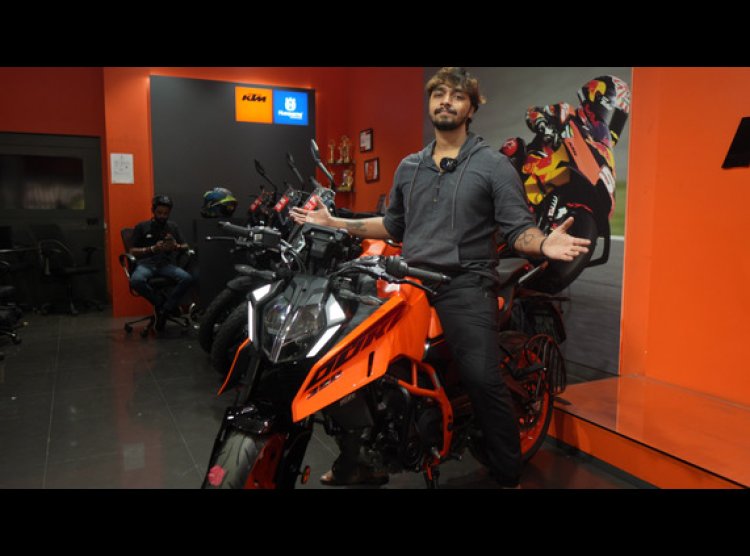Chapri Controversy; Sting and KTM's Unexpected Social Media Labels
How PepsiCo’s Sting energy drink and KTM motorcycles became unlikely symbols of internet ridicule, and why their brands might just thrive despite it.

PepsiCo India’s Sting energy drink and KTM motorcycles appear to have little in common, at least on the surface. Sting is a raspberry-colored caffeinated drink from a multinational beverage giant, while KTM is a premium Austrian motorcycle brand with a significant racing pedigree. Sting sells for Rs 20 per 250 ml bottle, whereas KTM motorcycles cost over a lakh. Sting is recognized for its distinct red color, while KTM is globally known for its trademark orange.
PepsiCo India’s Sting energy drink and KTM motorcycles appear to have little in common, at least on the surface. Sting is a raspberry-colored caffeinated drink from a multinational beverage giant, while KTM is a premium Austrian motorcycle brand with a significant racing pedigree. Sting sells for Rs 20 per 250 ml bottle, whereas KTM motorcycles cost over a lakh. Sting is recognized for its distinct red color, while KTM is globally known for its trademark orange.
PepsiCo India’s Sting energy drink and KTM motorcycles appear to have little in common, at least on the surface. Sting is a raspberry-colored caffeinated drink from a multinational beverage giant, while KTM is a premium Austrian motorcycle brand with a significant racing pedigree. Sting sells for Rs 20 per 250 ml bottle, whereas KTM motorcycles cost over a lakh. Sting is recognized for its distinct red color, while KTM is globally known for its trademark orange.
Yet, on social media, both brands have increasingly become symbols of the "chapri" label. In popular internet culture, a chapri is a term for a guy who dyes his hair in bright colors such as red, green, orange, or blue. He typically wears narrow-bottom denim jeans that end at the calf, a vest, or a half-open shirt exposing his chest. The most distinctive trait of a chapri, aside from his hair, is his speech. Phrases like “Ha meri jaan,” “bantai,” “bachi,” or “pasha” are commonly associated with this persona.
Social media is rife with short videos mocking these men. More recently, videos have emerged that depict consuming Sting or riding a KTM motorcycle as markers of a chapri. Despite the ridicule, both brands are highly successful in their respective markets.
Sting was introduced to India by PepsiCo in 2017 and quickly became popular in the energy drink market. According to Mordor Intelligence, the market size was Rs 619.1 crore ($0.74 billion) and is expected to reach Rs 8,442.6 crore ($1.01 billion) by 2030. Sting competes with brands like Charged by Thums Up, Red Bull, and Monster.
The reason behind Sting and KTM becoming emblems of the chapri label can be traced back to their social media portrayal. In May 2024, the financial daily Mint reported that Sting accounted for 15% of the local bottler Varun Beverages Ltd’s (VBL) overall volume portfolio. VBL handles 90% of PepsiCo’s production and sales in India. According to Euromonitor, Sting’s off-trade volume and value share indicate its success.
KTM, on the other hand, has been in India since 2012 and has significantly impacted the premium sports motorcycle segment. Bajaj Auto, KTM’s co-owner, reported an 18% rise in consolidated net profit to Rs 2,011.43 crore ($24.1 billion) for the quarter ending March 31, 2024. Rakesh Sharma, executive director of Bajaj Auto, mentioned that KTM achieved its highest revenue, EBITDA, PAT, free cash flow, and volumes in India.
Despite their success, the chapri label can be problematic for brands. The term’s origins are anything but humorous. It is a casteist slur used against the chapparband caste, who were historically limited to mending temporary roofs. This lack of awareness or indifference has led to the term’s normalization, similar to other casteist slurs.
However, the impact on sales and brand image varies. Sai Ganesh, a former brand head at Dunzo, believes KTM has managed to maintain its premium image by focusing on high performance and not acknowledging the colloquial usage. For Sting, Ganesh feels the risk is low compared to the positive traction the brand is gaining.
Creative experts suggest that brands should not respond directly to such labels. Sambit Mohanty of McCann Worldgroup and Ramanuj Shastry of Infectious Advertising agree that ignoring the taunts and focusing on product sales is the best approach. Shastry views the situation as a sign of success and believes that negative PR can still benefit the brand.
Ultimately, unless there is a decline in sales, the brands might do well to adhere to the adage: “There is no such thing as negative PR, it’s just PR. Enjoy it.”

 Sumit Rawat
Sumit Rawat 










